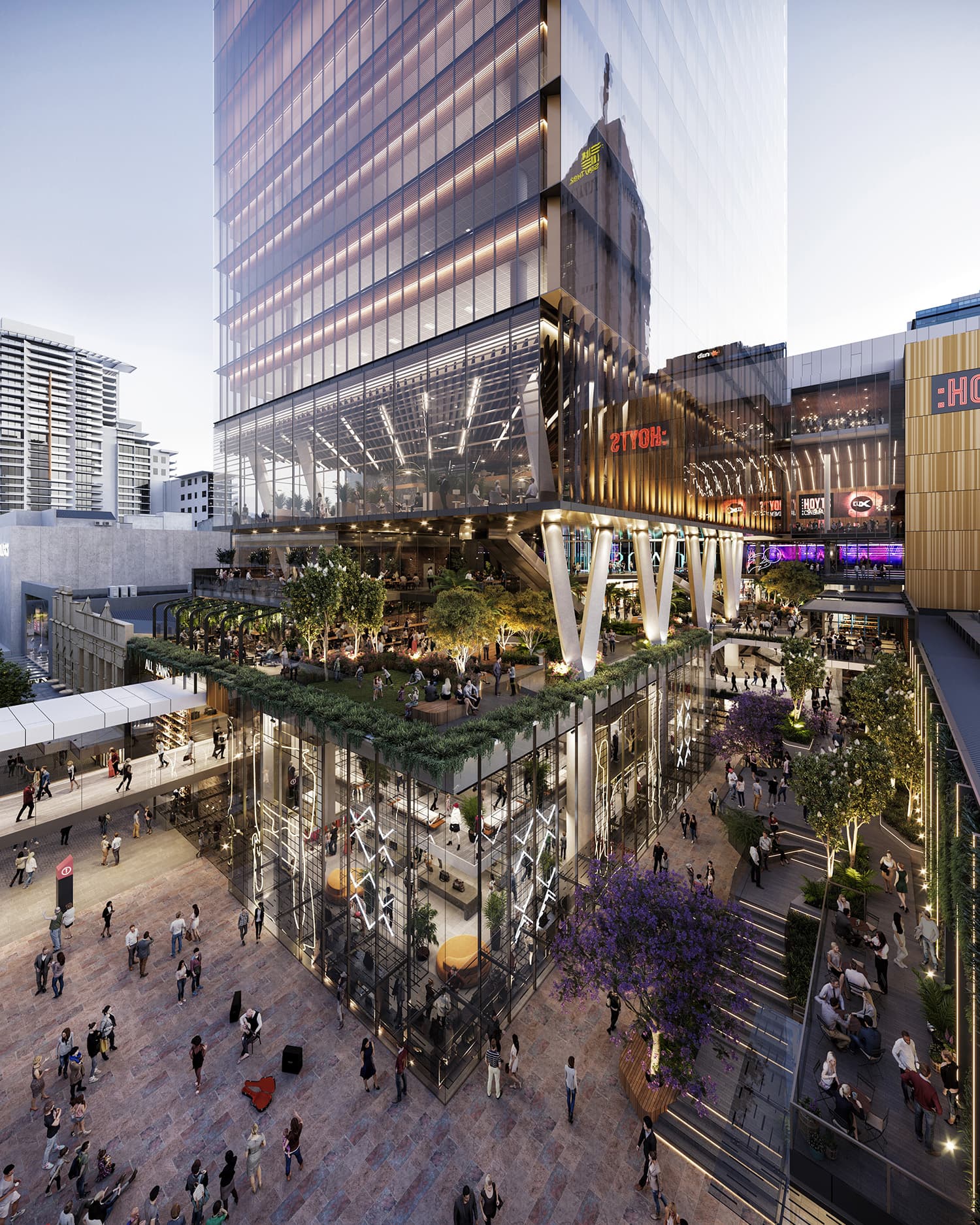
From Retail Giants to Community Anchors
How Commerce and Community Are Reshaping Big Box Retail By mid-2025, the headlines were familiar: Macy’s to shutter 150 stores. Rite Aid enters bankruptcy—for the second time. Walgreens announces 500 closures. Even Walmart is trimming its footprint.
But beneath the surface of the so-called big box collapse is a quieter, more consequential story—one where real estate developers, cities, and communities are reimagining these cavernous spaces into modern, multi-functional, and economically productive uses.
Big box retail, once synonymous with excess and obsolescence, is becoming something else entirely: civic infrastructure.
In Rocky Mount, North Carolina, two abandoned big box stores—formerly a Circuit City and Home Depot—were recently redeveloped into a 115,000-square-foot early childhood education campus. The $24 million project, backed by a mix of public and private funding, now includes classrooms, health clinics, and family services under one roof. “There’s no reason a space built to sell televisions can’t be used to raise a generation,” said project director Fred Turnage.
It’s not an isolated case.
In Stamford, Connecticut, the shuttered Saks OFF 5th inside Stamford Town Center is being redeveloped into what will be the nation’s largest indoor pickleball facility. At over 80,000 square feet, the space will host 28 courts, a cafe, and social areas. It’s expected to attract more than 400,000 annual visitors, generating meaningful foot traffic for the rest of the mall and surrounding retail.
“Repurposing retail anchors into recreation hubs makes economic sense,” said James Cook, Americas Director of Retail Research at JLL. “It adds dwell time, drives food and beverage, and supports daily traffic—something traditional retail has struggled to sustain.”
This formula is repeating across the country. In Milwaukee, three recently closed Walmart locations are being converted into a Latin American grocery market, a childcare center, and a self-storage facility with retail frontage. In Fort Worth, a former Kmart now hosts a health clinic, gym, and leasing office for a nearby apartment complex.
What’s driving this shift isn’t just vacancy. It’s the increasing cost of ground-up construction and the need for speed. “The shell is there. It has HVAC, fire suppression, parking, access. When you reuse a box, you’re not just saving capital—you’re saving years,” said Bill Di Santo, president of Englewood Construction.
From an economic standpoint, the strategy is starting to pay off. A recent RCLCO study found that redeveloped big box assets into mixed-use or community-centered functions yield 12–18% higher revenue per square foot than their prior retail use cases. In multi-tenant formats, that number climbs as high as 24%, thanks to improved co-tenancy dynamics and higher foot traffic across dayparts.
Cities are increasingly incentivizing the model. In Orange County, Florida, a former Sam’s Club was transformed into a county health department headquarters through a public-private partnership. “It would’ve cost us double to build from scratch,” said Orange County Mayor Jerry Demings. “Instead, we activated a dead space and saved taxpayers millions.”
There’s also a cultural shift underway. Big box retail has long existed as a place to buy. Now, it’s becoming a place to be.
At Jordan’s Furniture in Reading, Massachusetts, the showroom includes a ropes course, IMAX theater, and casual dining. A visit can last two hours without a single purchase—and that’s the point. “We’re not selling furniture. We’re selling a day out with the family,” CEO Eliot Tatelman told CNBC earlier this year.
Looking ahead, the future of big box will likely be a mix of uses—retail, healthcare, recreation, logistics, and education—all coexisting in reimagined formats. The rise of smaller store footprints from giants like Target and Costco only reinforces the notion that bigger isn’t always better—but versatile is.
Still, not every redevelopment works. Leasing inertia, zoning constraints, and financing gaps can slow even the best-laid plans. And for every success story, there’s a property waiting for a clear vision.
But the direction is clear: commerce and community are converging inside the spaces big box once defined. What was once a one-size-fits-all retail model is now fragmenting into dozens of hyper-local, high-impact uses.
What matters next isn’t just filling the space—but understanding what a neighborhood actually needs. Because the most valuable box in the market today isn’t the one with the most square footage. It’s the one that gets used.